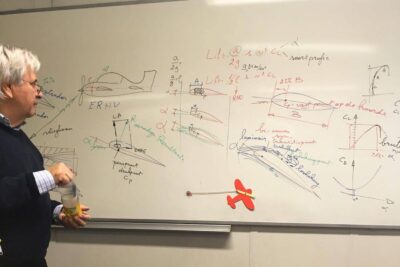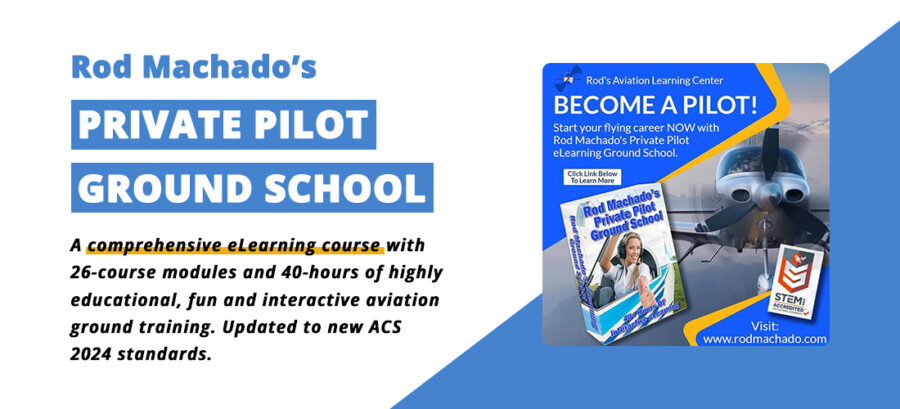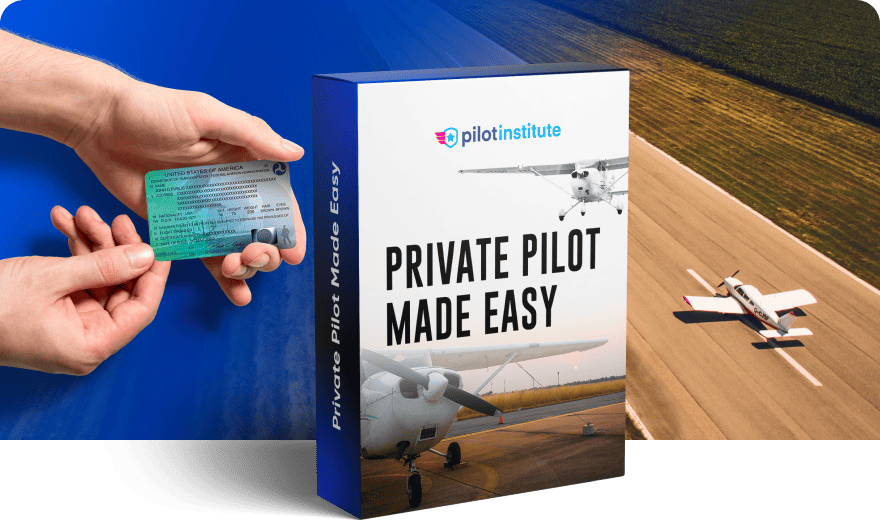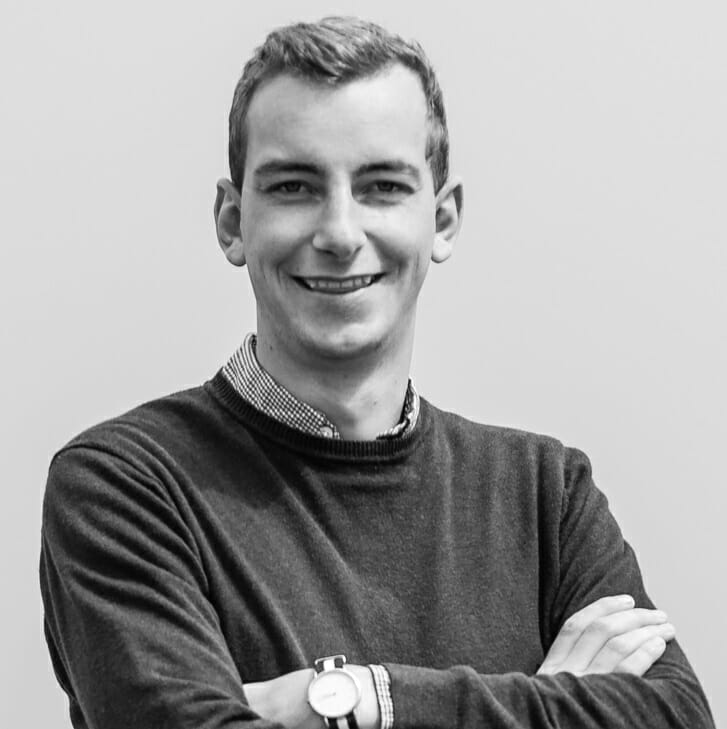Getting Your Private Pilot License – Studying
19 November 2018 | Updated on February 05, 2024
This post is part of the story series Getting Your Private Pilot License.
As a glider pilot with about 220 flying hours, I finally decided to take the jump and start my Private Pilot training in June 2018. In this series, I share my experiences of getting my Private Pilot License in Belgium. From preparing for my first lesson, to my first solo flights and ultimately my checkride.
I hope these articles will be able to help you get the most out of your own flight training!
With all the fun flying, you would almost forget there’s a theoretical part of flight training as well..
Since my flying club only organizes a theory course when there are enough candidates and it takes almost an entire year to finish, I decided to take the course in a nearby flying school that offers the PPL(A) theory in distance learning. This means I do most of the studying by myself and at my own pace, with just 3 Saturdays in class. In those classes, we cover the most important sections of each course, example test questions, tips, trick questions and more.
Because of my previous gliding experience, I not only get credits for flying hours, I also get exemptions for some of the standard PPL theory courses. This means I have to take only about 5 courses, instead of the regular 9. Since that makes less studying, I don’t complain 🙂
The courses I still have to take are the following:
- Operational procedures
- Navigation
- Principles of flight
- Flight performance & planning
- Aircraft general knowledge
It might be important to note that I take all my training in Belgium, which is part of EASA. Therefore, training standards and requirements are a little different than from the FAA for example. We are required to take a certain amount of subjects and hours of ground school before we get signed off the take our written test.
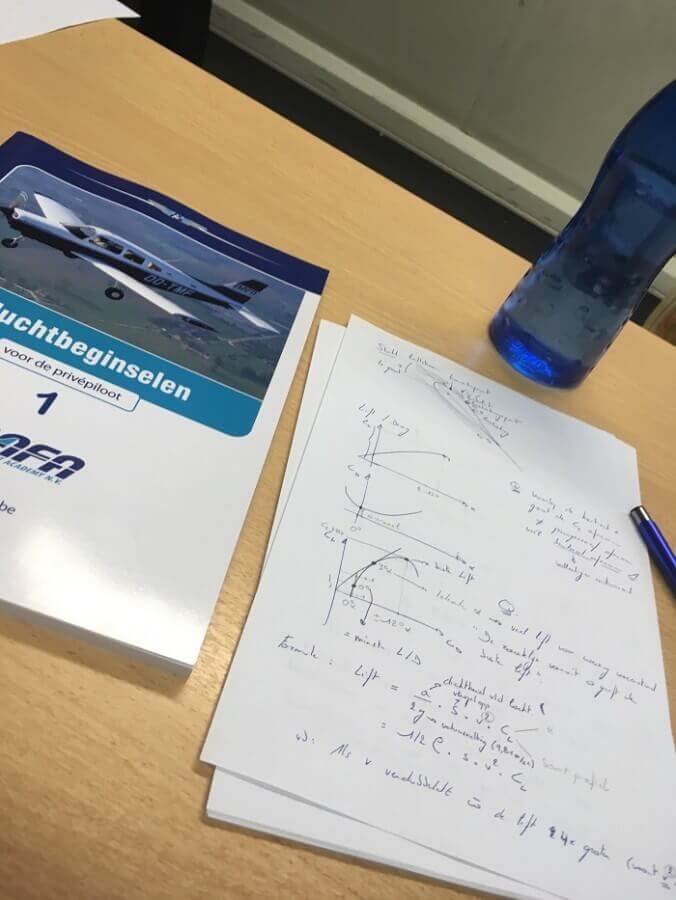

The first day of ground school, we covered Operational Procedures, a course that covers all procedures related to emergencies and regulations. The second Saturday, our ground instructor covered Navigation, Principles of Flight and Flight Performance & Planning. I do have to say I rarely attended a class with such a motivated, inspiring and interesting teacher. Love to learn new things!
The third and final day of ground school, we covered the last subjects, Aircraft General Knowledge and some radio navigation and had a Q&A round. After that, the real studying began..
Now you might wonder why I only had three days of ground school in class. It’s because I’m taking the distance-learning course, in which I spend most of the time studying the subjects at home by myself. The sessions in class are mainly focused on some harder parts of the material, asking questions and going over example test questions. The advantage is that you can do it all on your own pace, going as fast or slow as your schedule, or motivation, allows. Since I want to get this over with as soon as possible to focus on the flying itself, this would be the fastest way to progress in my training.
The way we study is using the books and the school’s online question database.
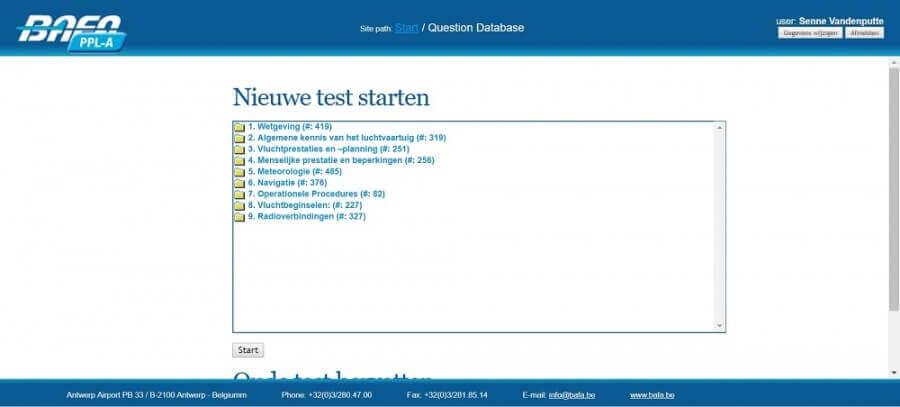

As you can see, there are quite a few questions to go over before our so-called progress check. This is a written trial test to prove the school we are ready to take the written test with the Belgian aviation authorities. A pass mark of at least 75% is required before the school signs us off to take the written exam.
Luckily I don’t need to go over all subjects, due to the credits I receive for my EASA gliding license. This almost halves the numer of questions to answer.. But there are still more than enough questions to go over, which would take months if you don’t work on it at least a few full days a week.
The reason this takes so much time is because the questions are not just multiple choice with only one correct answer. The way we are supposed to study this is primarily in two rounds. The first round is without seeing the answers, so as open questions for which we can use all available study material (books, AIP, regulations, internet…). Once we have covered all questions, we have to go over all of them again, now as a multiple choice test. Now the key is not to just pick the correct answer and go on to the next Q, we need to go over every single answer and reflect on it, because they all have a reasoning behind them. This way, every question in the database essentially resembles 12 questions in total. This means a LOT of study work.. but it also means that after studying it all this way, the final written test should essentially become a formality, because by then we practically know everything by heart.
One final thing I would like to add as a study tip: the guys over at Boldmethod do an amazing job explaining concepts that seem complex at first in a very simple and intuïtive way. Make sure to browse through their articles section, it’s a big help for me!
Let’s get back to studying now and hope the weather here in Belgium clears up so I can go fly again soon!
Talk to you later and enjoy your weekend,
Senne
This post is part of the story series Getting Your Private Pilot License.
As a glider pilot with about 220 flying hours, I finally decided to take the jump and start my Private Pilot training in June 2018. In this series, I share my experiences of getting my Private Pilot License in Belgium. From preparing for my first lesson, to my first solo flights and ultimately my checkride.
I hope these articles will be able to help you get the most out of your own flight training!





















